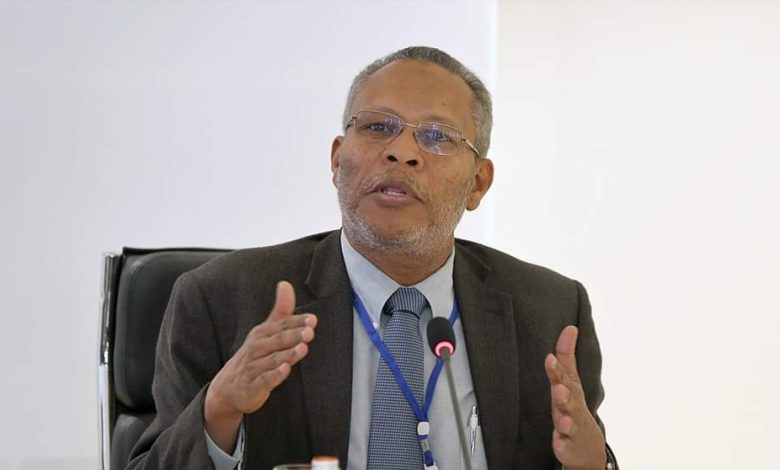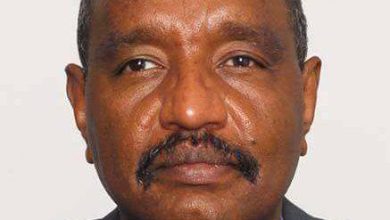An Unstable Transitional Period: The Transformations of the Hybrid Coalition in Sudan (3-6)

By: Hassan Elhag Ali Ahmad
Second: The Dynamics of Transitional Period Alliances: From Expansion to Hybridity
Nearly four years have passed since Sudan signed the constitutional document on August 17, 2019. It was hoped that the transitional period would end in 2023, and that the general elections supposed to be held at the end of the period would lead to the formation of an elected civilian government, but none of these expectations came true.
1- Contentious politics and the frequency of alliances:
Since the transitional period, the political system has suffered a state of fragmentation of political forces. This prompted it to enter into alliances to gain strength, such that these alliances became an effective factor in the political movement. But in the case of the contentious politics that characterized political behavior in Sudan, building alliances and then breaking them became the dominant feature of political activity, and the study will work to reverse it. The building of the alliances that the study is concerned with began with the formation of the Alliance of the FFC, which the paper calls the umbrella alliance for the diversity of parties and organizations affiliated with it during the uprising of December 2018. Then it was the largest of the alliances formed during the transitional period, and it witnessed transformations after it was formed by the forces of civilian, military, and armed movements. This alliance has not stabilized; It was exposed to divisions that affected its formation and identity, and other alliances were established that opposed it.
The first coalition emerged before the fall of the “Ingaz” regime, which was led by Al-Bashir, was FFC coalition, and it was a loose coalition that included more than a hundred parties, movements, and organizations. The first group that formed the FFC used the grouping method, which is to address the largest number of targets to be members of its alliance. It became like an umbrella coalition that brought together a wide political spectrum of political organizations with disparate goals, united by a minimum of agreement in one goal, which is to overthrow the “Ingaz” regime. The FFC coalition issued a declaration that included general principles, such as the immediate resignation of Al-Bashir and his regime, the formation of a transitional government, stopping the war, stopping the economic deterioration, and working to reach a comprehensive and just peace agreement. The African Union mediator for Sudan after the ouster of Al-Bashir, Mohamed Al-Hassan Ould Labbat, points out the great diversity among the components of the FFC, and this was evident in the change in the composition of the delegations that were meeting with the international mediators due to the inability to agree on a unified leadership. This type of alliance raises general issues and broad slogans, and is temporary and dissolves once the goal that brought the alliance together is achieved, but it may continue for other members to achieve a degree of political solidarity in a political system characterized by fragmentation and polarization. This is what happened to the FFC Alliance, as will be mentioned later.
2. Internal Transformations of the Umbrella Alliance
The Civil Umbrella Alliance witnessed its first signs of tension, prior to the signing of the political agreement, for ideological and political reasons. The Communist Party criticized the draft political agreement and the constitutional decree document on July 15, 2019. The party considered that this agreement would not open the way to achieving the goals of the revolution, and that it leads towards the implementation of the counter-revolution project, and that it was prepared to implement a soft landing, which is a flawed agreement that emanates smell of conspiracy. Once the transitional government was formed, the umbrella coalition witnessed a significant shift in its identity and goals. Various political forces withdrew from it for various reasons. After the coalition achieved the only goal that united its components – which was to overthrow the “Ingaz” regime – the discrepancy in visions and goals became apparent. As Kalivas points out, such alliances are inherently fragile; Because it is formed within a conflict framework characterized by polarization and obsessions, and because its dominant feature is mobility and negotiation. As the sub-alliances that make up the umbrella coalition were made up of elements that shared only minimal goals, such as representation in power, the factors of tension within the coalition were greater than the factors of stability.
Tension within the coalition escalated to a split, for reasons related to political control over it and the varying ability to influence it. The Professionals Association (PA), which played an important role in mobilizing against Al-Bashir’s government, split into two wings, for political reasons related to one of the wings accusing the Communist Party of controlling the gathering after the election of its new secretariat on May 10, 2020. The issue of the ability to influence the coalition and gain a share emerged. Greater representation in its apparatus, with the National Umma Party, which froze its activity in the FFC, on April 22, 2020, followed by the PA, which also froze its membership in the FCC structures, on July 23, 2020. The PA believed that the Central Council does not fairly reflect the size of the political forces that make up the Council, and it lacks a comprehensive strategic vision. The National Umma Party added to the reasons for the dissatisfaction of the parties comprising the coalition, the lack of clarity of the political vision and the lack of fair representation, and called for the conclusion of a new social contract. Then withdrawals from the coalition continued. On November 7, 2020, the Communist Party announced its withdrawal from the “Forces of National Consensus (FNC)” and “FFC” alliances. The party justified this position with political reasons, including the restrictions on freedoms, and the secret and suspicious agreements that elements of FFC are making inside and outside the country, leading the coalition toward a coup against the revolution. The withdrawal of the Communist Party was followed by the withdrawal of other political forces, including the Sudanese Baath Party, which withdrew on November 9, 2020, followed by seven other political organizations that cited political reasons for their withdrawal, the most important of which is that it does not represent a political incubator on which much can be relied upon. As a result of these withdrawals and freezes, the civilian umbrella coalition turned into a minority coalition.
3- Hybrid Alliance
The umbrella coalition (FFC) entered into negotiations with the Military Council, which resulted in the Council recognizing it as a representative of the military component, both the Armed Forces and Rapid Support Forces (RSF), and the military recognizing the FFC Alliance as representing the Sudanese people. These negotiations resulted in the crystallization of a hybrid alliance between the civilians, represented by FFC, and the military, represented by the Transitional Military Council (TMC). The political agreement between the two parties was to establish governance structures and institutions, which was signed on July 17, 2019, and then in the constitutional document, which was signed on August 17, 2019, and was established to govern the course of the transitional period. This alliance was a hybrid; Not only because it brought together military and civilian personnel, but also because it brought together very diverse political forces. This hybridization does not have easy effects, as the coalition – in order to survive – had to have a high political ability to maintain the balance between the conflicting interests of its components, and protect against organizational disintegration. If ever this civil-military alliance was equally susceptible to political conflict between its components and organizational disintegration with any other political alliance, the severity of this potential was greater than other forms of alliances.
The hybrid coalition has begun to exercise its activity in the executive apparatus of the state, in a political atmosphere tainted by doubt and mistrust between the two main components, civilian and military, and a lack of harmony between the organizations that make up the alliance. In this regard, Ould Labat, the African Union envoy to Sudan, points out that the major differences he found among the revolutionary forces “are not all political or ideological, they are also sociological and psychological.” A state of doubt emerged among the civilian component of the government, and centered around suspicion of the future behavior of the military and the extent of their commitment to the success of the democratic transition.
A tracing analysis of the processes of expanding alliances, and their hybridization between the Sudanese political and military components, proves that they had a contradictory dynamic, ranging between concluding and dissolving alliances, political agreement and turning against it, joint action, suspicion of the ally, declaring political principles and the implication of retracting from them. Most of these alliances were minimal alliances, remaining fragile and ineffective in achieving the stated goals. All of these characteristics that characterize these alliances represent indicators of the entrenchment of contentious politics within the behavior of Sudanese political forces.



